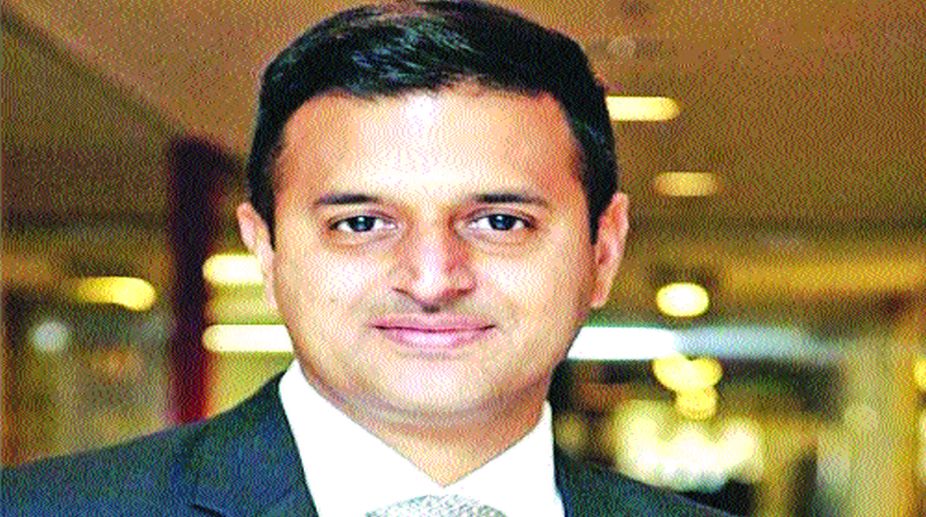Embraer eyes India for supply chain expansion for aircraft manufacturing
Embraer, a global aerospace company, is looking to expand its supply chain in India.

Amber Dubey.
Amber Dubey heads the Aerospace and Defence sector at KPMG, one of the world’s leading audit firms. An alumnus of IIT Bombay and IIM Ahmedabad with professional experience of over 26 years, Dubey has worked with several airports and airlines in India and the Middle East.
He has also worked with the Ministry of Civil Aviation in drafting the National Civil Aviation Policy (NCAP) and for the formulation of the Regional Connectivity Scheme (RCS). Dubey is Vice Chairman (Aviation) at Confederation of Indian Industries (CII), US India Business Council (USIBC), American Chambers of Commerce (AmCham), and a key member of the aviation committees of Ficci and Assocham.
In an interview to ABHIJEET ANAND, Dubey spoke about how an assessment of Ude Desh Ka Aam Nagrik (UDAN) scheme can be done in the absence of passenger figures, whether an indigenously developed civilian aircraft is needed and should there be a policy on drones. Excerpts:
Advertisement
Q: Public private partnership (PPP) airports seem to be doing better than those run by Airports Authority of India. Do you think private participation is the road ahead for airports?
A: A good airport system will need a combination of Airports Authority of India, PPP and fully private airports. Where private funding is available, it may be advisable to bring in the private sector. At other places AAI will continue to have a strong role like at the UDAN airports and at the civil enclaves of military airfields.
Q: Could the government have handled the A320 Neo engine snag issue in a better way?
A: The engine issue is unfortunate and can happen to anyone, anywhere in the world. It appears that the manufacturer, airlines and safety regulators and the government are working closely to ensure that passenger safety and convenience are not compromised. It is a good learning for all concerned.
Q: The government is not ready to give figures on how many passengers have used the UDAN scheme. So how are we going to assess it?
A: UDAN is a unique experiment to take flying to the interiors. It’s never been tried anywhere in the world on this scale. It’s being funded by airlines themselves and not by the exchequer. Let’s give it time. Data about most airports is available on the AAI website free of cost, unlike anywhere in the world. Specific data about any UDAN airport can be obtained through RTI.
Q: Given the fact that several airlines still do not have sufficient aircraft for operating on regional connectivity routes, do you think there is some problem in acquiring aircraft or getting aircraft leased?
A: Any untested route will take time to mature. Aircraft lessors are not too keen on small fleets and small aircraft since the risk is high. UDAN is only a year old. As mentioned earlier, let’s give it time. Rome was not built in a day.
Q: The aircraft acquiring process was made simpler sometime back. Is there some scope for further simplifying it?
A: Yes. While the process of acquisition and certification and de-registration has been made smoother, there’s always scope for improvement. Hopefully, the much awaited e-GCA project will make many DGCA processes online, transparent and faster.
Q: There was a lot of opposition from airlines over the draft passenger charter. What is your take on this?
A: As traffic grows, the ability of an individual passenger to get a genuine grievance redressed is low. A passenger charter is therefore much needed. At the same time, delays and cancellations are also caused due to reasons beyond the control of airlines. Care should be taken that the attribution of blame and penalties is not excessive. Balance is key. Overall, the draft charter is a good start and will evolve with time.
Q: How is the aviation sector going to benefit if India goes for developing a civilian aircraft?
A: India is the only country among the top five aviation markets that doesn’t have an indigenous civilian aircraft. Efforts are being made by Hindustan Aeronautics Limited (HAL), a large Indian private original equipment manufacturer (OEM) and an entrepreneur in Maharashtra separately to get into the civilian turboprops business.
As a nation, we can’t be dependent on foreign aircraft ~ both civil and defence ~ in perpetuity. Collaboration with global OEMs under active support and pressure of the Indian government is key.
Q: Do seaplane operations have a future in India?
A: Huge. With 7,500 km of coastline and over 1200 islands, India has wasted its coastal tourism opportunity. Lakes, rivers and dams provide further opportunities.
Countries far smaller have generated far more revenue, jobs and taxes with much less. Seaplanes need fiscal, monetary and infrastructure support. It also needs political support to address protests by local communities.
Q: As it is the government sector which makes maximum use of drones at the moment, is a policy on drones really necessary for India?
A: Drones are the future ~ both for civil and defence use. They have huge applications across industries, but also risks related to privacy and sabotage. A drone policy is therefore much needed.
It needs to be strong enough to detect and punish mischief-makers but must also be flexible enough to foster innovation. If the industry and government work in a concerted fashion, India has the potential to be the drone capital of the world.
Advertisement